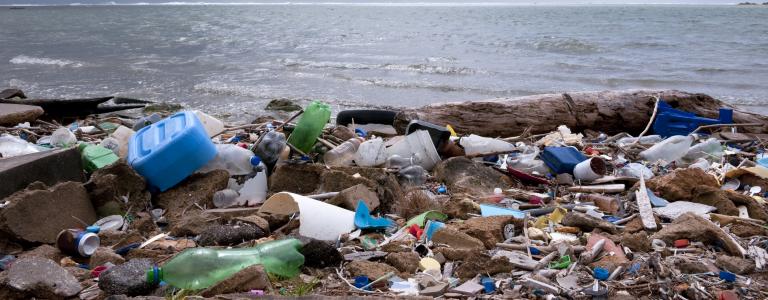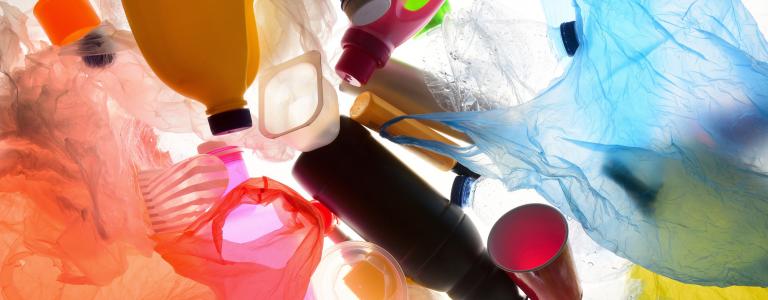Is It Raining Plastic?
We need more research to understand the effects of microplastics on our fresh water—and find solutions, quickly. That's where our team of scientists come in.
Plastics are everywhere. Microplastics—those tiny particles the size of a sesame seed or smaller—have been found on top of mountains; at the bottom of oceans; in rivers and lakes; and in whales, birds, and fish.
It isn’t too difficult to imagine how all that plastic ends up in our bodies of fresh water. Research has shown as much as 75% of it comes from the disintegration of larger consumer products made of plastic—such as bottles, bags, and fishing gear.
Synthetic clothing such as fleece is another culprit, as are the microbeads found in some health and beauty products (recently banned by the United States and Canada).
Most microplastics come from the disintegration of larger consumer products. (Photo: curtoicurto)
But even though we know there is too much plastic where it doesn’t belong, there is a lot we still don’t know.
For example, what impacts do these plastics have on living organisms? Are plastic particles vectors for other contaminants? Do plastics build up in ecosystems? Can they travel through the air? And, given that we are all likely using more plastics due to COVID-related measures, what lasting impact will that have?
We need more research, including on real living freshwater ecosystems, to discover how big a problem microplastics really are—and how we can fix them.
That's exactly what makes our Experimental Lakes Area in Canada’s pristine boreal forest so unique and perfect for this whole-lake approach to experimentation.
The 58 lakes and their watersheds that make up the world's freshwater laboratory are at the top of the watershed and are not fed by any significant upstream sources. This means researchers can monitor the air and water in and around the lakes to determine how much plastic pollution already exists in remote lakes.
It also means that with a proposed whole-lake experiment (in this case, by carefully and safely adding microplastics and closely monitoring the ecosystem), we will better understand the impacts on the whole lake and food web that it supports.
Scientists at the Experimental Lakes Area study all aspects of the ecosystem—from the atmosphere to fish populations. (Photo: Lauren Hayhurst)
More than 50 years of existing data about the chemistry, biology, and weather patterns at the site will help us understand and validate what we discover.
And once we know more about what microplastics do to our freshwater lakes and those reside within, we can then work directly with governments and industry to develop relevant and effective policies and procedures that protect our precious freshwater resources from plastics pollution.
You might also be interested in
COVID-19 Has Canada Using More Plastic. How will it impact our fresh water?
How can Canada's leaders protect our fresh water from plastic pollution without compromising our health and safety?
Beating Plastic Pollution: If you can't reuse it, refuse it
June 5 marks World Environment Day, with a focus on reducing the heavy burden plastic pollution places on nature, wildlife and human health. This blog explains four ways we can all make a difference.
Researchers to measure microplastics in pristine northwestern Ontario lakes
Scientists expect to find microplastics in lakes humans barely touch — they just don't know how much or how it winds up so far away from people and industrial activity.
Microplastics: What are they and what can we do about them?
What exactly are microplastics? What are they doing to our water? And why should you be worried? We sat down with IISD Experimental Lakes Area research fellow Dr. Michael Rennie, who has recently worked on the impact of microplastics on fresh water, and he gave us the lowdown on them.

